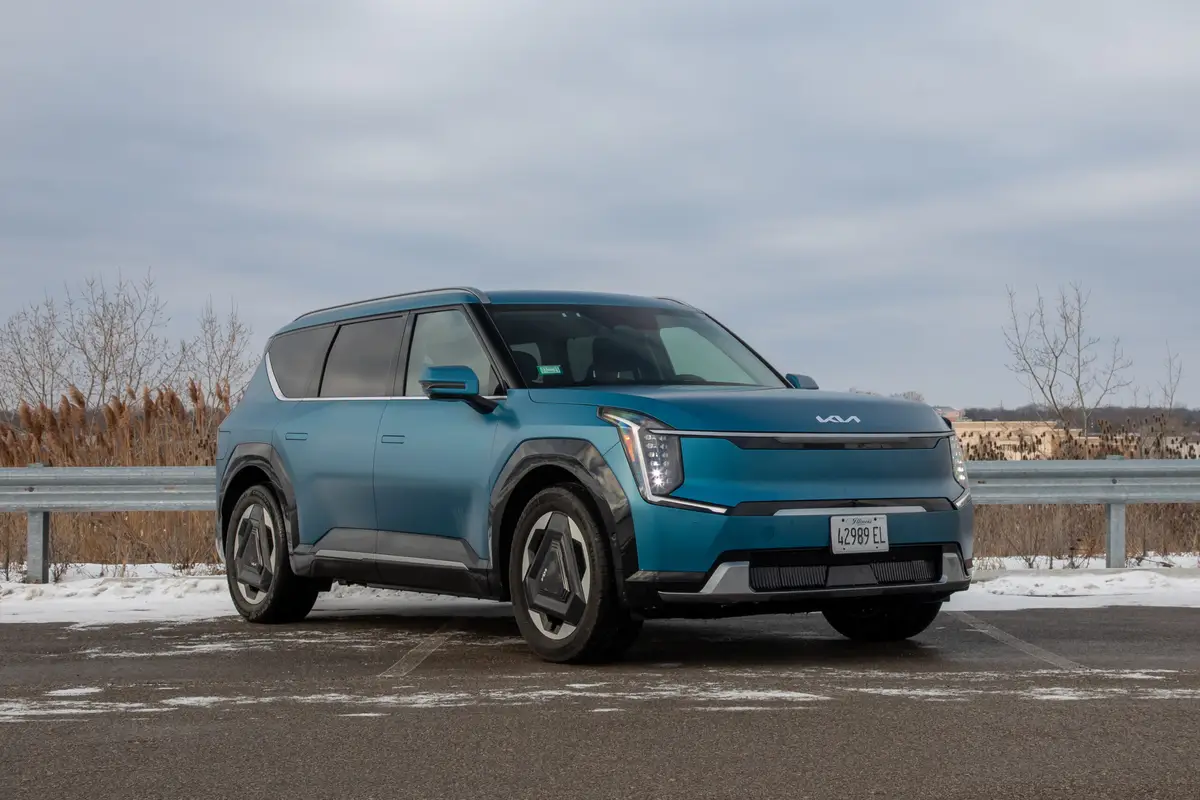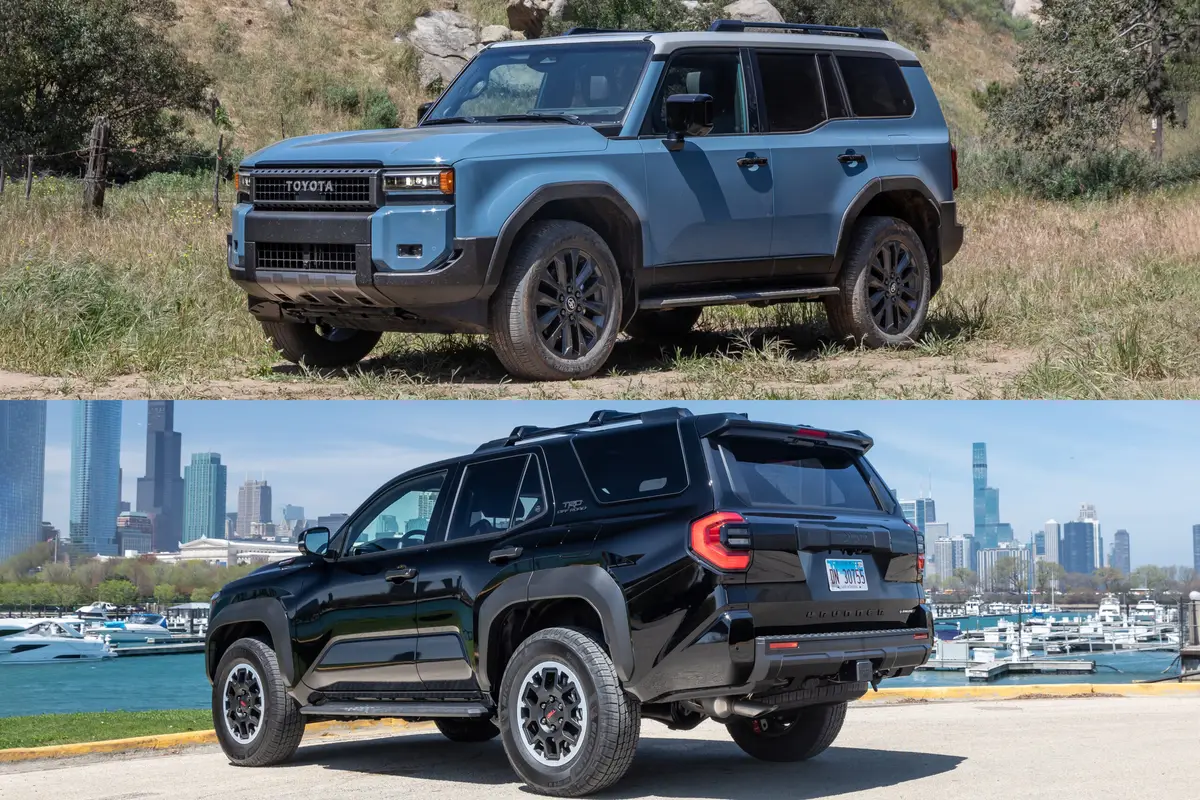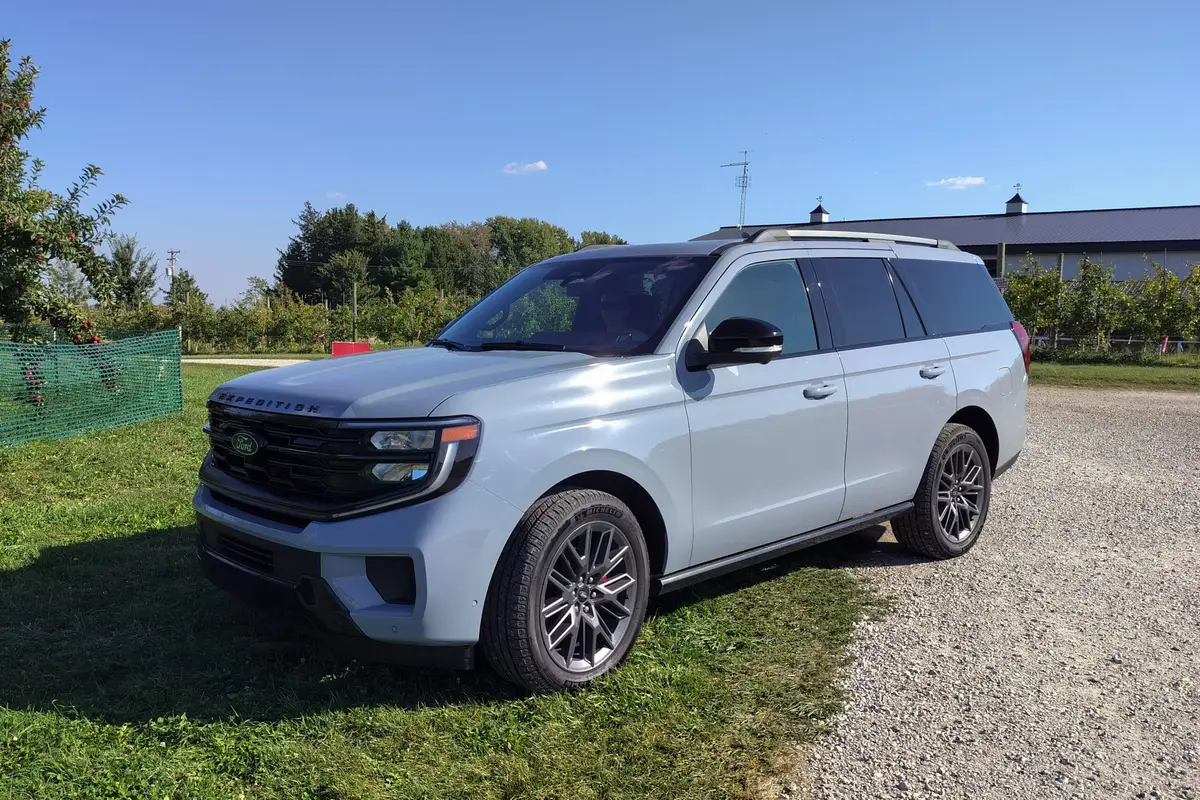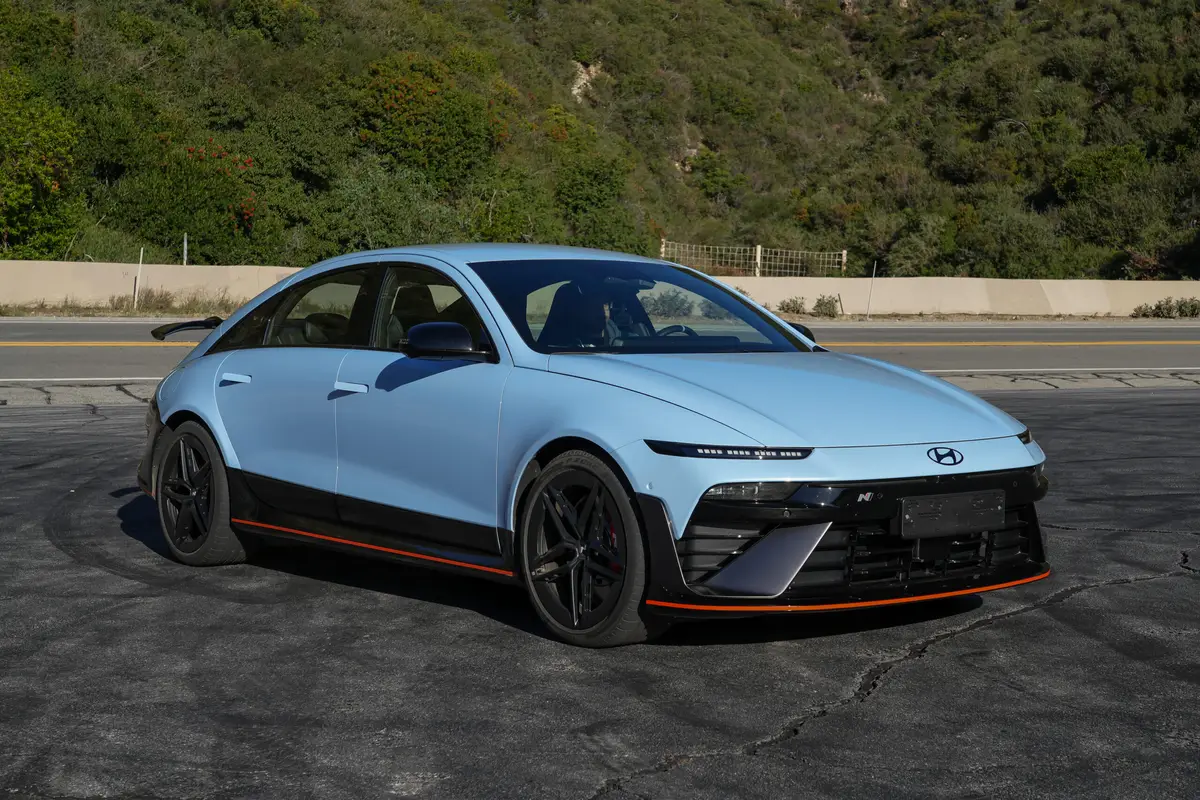How Do the Seasons Affect Our Long-Term 2024 Kia EV9’s Efficiency?


An electric vehicle’s efficiency is impacted by many factors, but one of the most significant ones is temperature. Now that we’ve owned our 2024 Kia EV9 for a full year, we have charging and efficiency data from all four seasons, so we can see how efficient the EV9 has been in each of them as well as during our entire ownership.
Related: Long-Term Kia EV9 Update: What We’ve Learned After 10,000 Miles
It’s worth noting that we do not have precise temperature data for every moment of every drive; Kias are not Teslas and do not report the same level of official and third-party nerdery that Teslas do — for better and worse. We also don’t ask our editors to record the ambient temperature during every moment of every drive, as that would be so demanding and unsafe that no one would ever drive the thing.
Instead, our data log includes the date of every charging session and the trip computer’s average efficiency (in miles per kilowatt-hour) since its last charge. We’re using those numbers and separating them by meteorological season as defined by the National Oceanic and Atmospheric Administration’s National Centers for Environmental Information: Spring is March, April and May; summer is June, July and August; fall is September, October and November; and winter is December, January and February.
What Is Our 2024 Kia EV9’s Overall Average Efficiency?
- Our average is 2.5 miles per kWh
- The EPA rates our Kia EV9 — long-range with all-wheel drive — at 2.4 miles per kWh
So far in our ownership, we are ever so slightly above the EPA’s average efficiency estimate for our EV9, logging 2.5 miles per kWh of energy used. That gives us a nice baseline to compare with each set of seasonal efficiency data, and we’ll see if we end up maintaining average-to-slightly-above-average efficiency throughout our ownership.
Related Video:
What Is Our 2024 Kia EV9’s Average Efficiency in Spring?
- Our efficiency in March, April and May has been 2.9 miles per kWh
For spring, our average efficiency was 2.9 miles per kWh, which is 16% more efficient than our overall average. Electric vehicles and EV batteries are happiest in warmer weather, but not too warm. In comfortable temperatures for you and me, an EV isn’t working hard to maintain the interior temperature; the battery more readily accepts a charge and can more efficiently expend energy to power the motor(s). This lets you go farther and longer between charging sessions than you otherwise would.
What Is Our 2024 Kia EV9’s Average Efficiency in Summer?
- Our efficiency in June, July and August was also 2.9 miles per kWh
Our summer efficiency was also 2.9 miles per kWh, which is more surprising than the spring number as hot temperatures can also negatively impact range and efficiency. Our EV9, however, seems to have handled the hotter months with ease.
What Is Our 2024 Kia EV9’s Average Efficiency in Fall?
- Our efficiency in September, October and November was 2.6 miles per kWh
As temperatures cooled, so did our EV9’s efficiency, dropping from the lofty heights of spring and summer to a still-above-average 2.6 miles per kWh. A lengthy Thanksgiving road trip also likely contributed to the drop, as EVs are less efficient at highway speeds.
What Is Our 2024 Kia EV9’s Average Efficiency in Winter?
- Our efficiency in December, January and February was 2.2 miles per kWh
Our efficiency took its biggest hit in winter, dropping roughly 12% from our overall average to 2.2 miles per kWh. Cold temperatures are likely the biggest culprit, both directly by impacting battery capacity and indirectly by requiring more energy to warm the cabin. A few more road trips during this timeframe also likely played a role.
More From Cars.com:
- How Well Does the Kia EV9 Work for a Cold-Weather Road Trip?
- How Well Does the Kia EV9 Drive in the Snow?
- 2025 Volkswagen ID. Buzz Vs. 2024 Kia EV9: Cold-Weather Efficiency Test
- 2025 Volkswagen ID. Buzz Vs. 2024 Kia EV9: Which Is the Better Family EV?
- Best Electric Vehicle of 2025
What Does All This Mean for You?
- Your mileage may literally vary
This is another (hopefully) helpful illustration that EV efficiency estimates are just that: estimates. Range and efficiency depends on a lot of factors, and what you observe could differ from estimates provided by the EPA.
Cars.com’s Editorial department is your source for automotive news and reviews. In line with Cars.com’s long-standing ethics policy, editors and reviewers don’t accept gifts or free trips from automakers. The Editorial department is independent of Cars.com’s advertising, sales and sponsored content departments.

Road Test Editor Brian Normile joined the automotive industry and Cars.com in 2013, and he became part of the Editorial staff in 2014. Brian spent his childhood devouring every car magazine he got his hands on — not literally, eventually — and now reviews and tests vehicles to help consumers make informed choices. Someday, Brian hopes to learn what to do with his hands when he’s reviewing a car on camera. He would daily-drive an Alfa Romeo 4C if he could.
Featured stories



